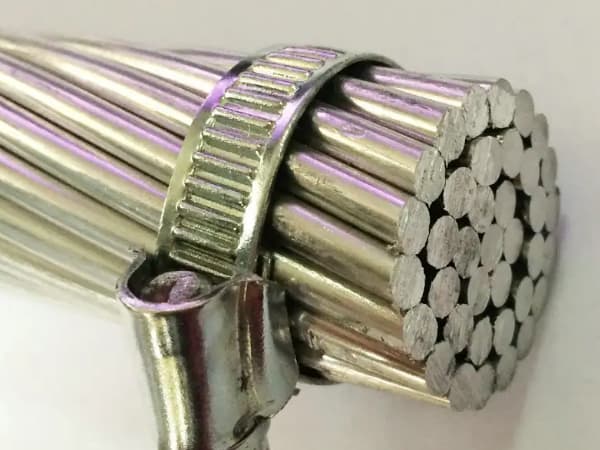In the world of electrical engineering, Electrical cables play an essential role in the transmission and distribution of energy. However, Not all electrical cables are equal. Depending on the level of tension that they must support, There are different types of cables, like him medium voltage cable and the high tension cable. Both are used to transport electricity to different distances and powers, But their differences are key in design, application and safety standards.
In this article, We will explore in detail what distinguishes a medium voltage cable from a high voltage cable, including its technical characteristics, manufacturing materials, applications, regulations and advantages, with a practical and technical approach that is useful for professionals, Electricity students and enthusiasts.

What is a medium voltage cable?
And medium voltage cable It is a type of electric cable designed to work in voltage ranges between 1 kV (1000 volts) y 35 kV. These cables are commonly used in networks of electric distribution and in large industrial facilities.
Mid -voltage cable characteristics:
- Nominal voltage: between 1 kV y 35 kV
- Insulation type: XLPE (cross-linked polyethylene) o EPR (etiileno propileeno)
- Conductor: copper or aluminum
- Main use: Energy distribution in urban and rural areas
This type of cable can be aerial or underground, depending on the installation project. It can also be found in industrial networks, Electrical substations and renewable energy systems.
What is a high voltage cable?
He high tension cable It is used to transport large amounts of energy to long distances. These electrical cables are designed to support tensions superior to 35 kV and even 220 kV or more. They are fundamental to electric transmission From generating plants to distribution substations.
High voltage cable characteristics:
- Nominal voltage: superior a 35 kV (until 220 kV or more)
- Reinforced insulation: High performance xlpe or gas or oil insulation systems
- Additional armor: Metal screens and armor
- Installation: mostly underground or in air transmission lines
These cables are more robust and technically complex, Due to the safety and insulation requirements that must be met to operate high voltages.

Key differences between medium voltage cable and high voltage cable
Next, The most important differences between these two types of electrical cables are detailed:
| Feature | Medium Voltage Cable | High Voltage Cable |
|---|---|---|
| Working voltage | 1 kV – 35 kV | +35 kV hasta 220 kV or more |
| Application | Local energy distribution | Long distance power transmission |
| Insulation type | XLPE, EPR | Advanced XLPE, oil, SF6 |
| Design and armor | Standard with basic protection | Screen and armor reinforcement |
| Cost | Moderate | Alto (For materials and design) |
| Normative | IEC 60502-2, A 21123 | IEC 60840, IEC 62067 |
Materials used
1. electric driver
Electrical cables, both average and high voltage, They can have as a driver copper o aluminum. Copper is more expensive but it has a better conductivity. Aluminum is lighter and cheaper, although it requires greater section to transport the same current.
- Copper cable: Ideal for facilities where high conductivity and lower resistance are required.
- Aluminum cable: more used in air transmission projects due to its low weight.
2. Isolation
The most common isolation in both types is XLPE (cross-linked polyethylene) for its high thermal and electrical resistance. However, In high voltage cables more advanced techniques such as:
- Isolation with pressurized oil
- Systems SF6 gas armored
- Semiconductor screens to control the electric field

Installation types
underground cable
- Requires Trench, Special channels and protections
- Less visual impact
- More expensive in installation and maintenance
- It is used for both average and high voltage
Air cable
- Installable by Posts the Towers of High Voltage
- Cheaper and easy to maintain
- Requires passing easements
- Greater risk against climatic phenomena
Practical applications
Medium voltage cable applications:
- Urban electrical distribution
- Industrial facilities (plant, factories)
- Solar and wind parks
- Shopping centers, hospitals, universities
High voltage cable applications:
- Interconnection between cities or countries
- Energy transmission from hydroelectric plants, thermal nuclear
- National Energy Transport Networks
- Distribution substations feed
International standards that govern its use
It is essential that these cables comply with International Security Standards. Some of the most common include:
- IEC 60502-2: Energy cables with extruded insulation for tensions between 6 y 30 kV
- IEC 60840: High voltage cables for systems between 30 kV y 150 kV
- IEC 62067: cables for systems superior to 150 kV
These standards define electrical tests, Mechanics, thermal and chemical that guarantee the Cable quality and his life.

Advantages and disadvantages
Medium voltage cable
Advantages:
- Lower cost than high voltage
- Simpler installation
- Good performance for medium distances
Disadvantages:
- Not suitable for long -distance transmission
- Greater voltage drop if used in long distances
High voltage cable
Advantages:
- Efficient in long distances
- Lower energy loss
- Reduces the need for intermediate substations
Disadvantages:
- It requires specialized personnel
- Higher initial cost
- Greater complexity in maintenance
Modern trends and sustainability
With the growing demand for renewable energy, los Medium and high voltage cables They are becoming increasingly common. Especially in protected or urban areas, he underground wiring minimizes the environmental and visual impact. They are also sought halogen -free cables, safer in case of fire.
Tips for choosing between medium and high voltage cable
- Analyze the electrical system voltage
- Evaluate the transmission distance
- Calculate the expected electric charge
- Consider the ease of installation
- Complies with local and international regulations
Conclusion
The choice between medium voltage cable y high tension cable It depends mainly on voltage level, transmission distance y The type of installation. Both electrical cables are fundamental for modern energy infrastructure, But its differences in design, materials and application must be carefully considered.
By understanding these differences, Safe electric transmission can be guaranteed, efficient and according to regulations. Either in a local distribution network or in a national transmission line, Choosing the correct cable is key to the success of any electrical project.
